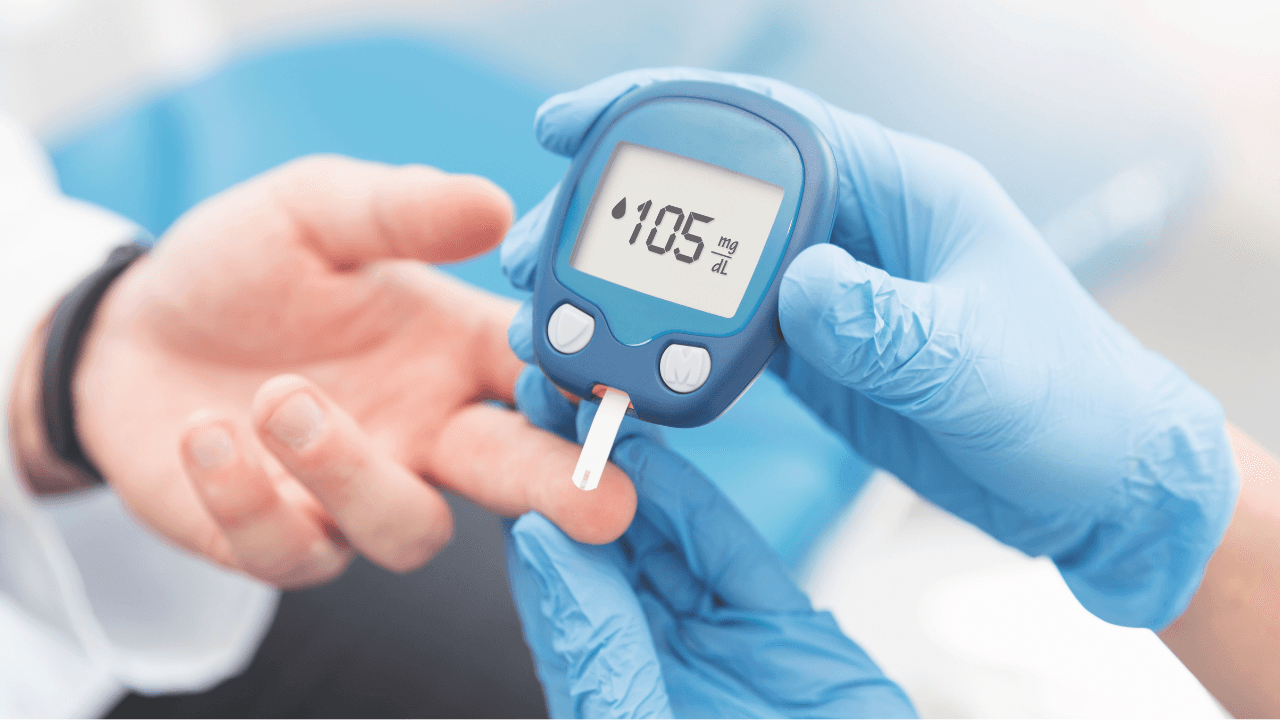A patient-friendly, medically reviewed guide to causes, symptoms, diagnosis, management, and remission.
Heald Membership: Your Path to Diabetes Reversal
Table of content
Type 2 diabetes treatment combines lifestyle changes, medications, and monitoring—tailored to each individual. Evidence-based programs can reduce risk, improve control, and in some cases, lead to remission.
Medical disclaimer: This article is for educational purposes only and is not a substitute for professional medical advice, diagnosis, or treatment. Always talk to your doctor or diabetes care team before making any changes to your medications, diet, or lifestyle.
At a Glance
Diabetes mellitus is a chronic condition where blood sugar (glucose) levels are too high because the body doesn’t make enough insulin, doesn’t use it effectively, or both. [1]
The main types are type 1, type 2, and gestational diabetes (during pregnancy). [1,2]
Type 2 diabetes is by far the most common, accounting for about 90–95% of all diagnosed cases. [2,3]
Untreated or poorly controlled diabetes can damage the heart, kidneys, nerves, eyes, and blood vessels. [2,3]
Evidence-based lifestyle programs and personalized diabetes mellitus treatment plans can reduce the risk of developing type 2 diabetes by about 58% in people at high risk. [4,5]
Some people with type 2 diabetes may achieve “remission”—near-normal blood sugars for at least 3 months without glucose-lowering medication—through intensive lifestyle changes and/or medical diabetes mellitus treatment, under specialist supervision. [6,7]
What Is Diabetes Mellitus?
Diabetes mellitus is a group of conditions in which the body has trouble keeping blood glucose (sugar) within a healthy range. Glucose is your body’s main fuel. Insulin, a hormone made by the pancreas, acts like a key that helps glucose move from your bloodstream into your cells, where it’s used for energy. [1]
In diabetes mellitus, one or more of the following happens:
Your body doesn’t make any insulin (or makes very little).
Your body doesn’t respond properly to insulin (insulin resistance). [1,3]
Over time, the pancreas can’t keep up, and insulin production falls.
The result is hyperglycemia—blood sugar that stays too high over time. Persistent hyperglycemia is what leads to long-term complications. [1,2]
How Your Body Normally Uses Glucose and Insulin
You eat food.
Your digestive system breaks carbohydrates down into glucose.
Glucose enters your bloodstream.
Rising blood glucose signals your pancreas to release insulin.
Insulin helps move glucose from the bloodstream into your cells for energy or storage. [1]
When this system works well, blood sugar stays in a narrow, healthy range.
In diabetes, there is a breakdown in this system:
There is too little insulin (especially in type 1 diabetes).
There is insulin resistance (cells don’t respond well to insulin), common in type 2 diabetes. [1,3]
Or a combination of both.
Types of Diabetes Mellitus
1. Type 1 Diabetes Mellitus
What it is: An autoimmune condition where the immune system mistakenly destroys the insulin-producing beta cells in the pancreas. [1]
Who it affects: Often begins in childhood or adolescence, but can appear at any age.
Insulin dependence: People with type 1 diabetes require insulin therapy from diagnosis to survive. [1]
2. Type 2 Diabetes Mellitus
What it is: A metabolic condition where the body becomes insulin resistant and cannot use insulin effectively. Over time, the pancreas may also produce less insulin. [1,3]
Who it affects: Historically more common in adults, but increasingly seen in younger people due to obesity, physical inactivity, and other factors. [2,3]
How common: About 90–95% of all diagnosed diabetes cases are type 2. [2,3]
3. Gestational Diabetes
What it is: Diabetes first diagnosed during pregnancy, when placenta-related hormone changes make the body more insulin resistant. [1]
After pregnancy: Blood sugar usually returns to normal after delivery, but people who have had gestational diabetes have a much higher risk of developing type 2 diabetes later in life. [1,2]
4. Other Specific Types
Less common forms of diabetes include:
Monogenic diabetes (for example, MODY — maturity-onset diabetes of the young).
Secondary diabetes due to conditions like pancreatitis, certain medications (such as long-term steroids), or endocrine disorders. [1]
These require specialist evaluation and often genetic or endocrine work-ups.
How Common Is Diabetes and Why It Matters
Diabetes is very common and rising worldwide. For example, in the United States: [2,3]
Type 2 diabetes accounts for around 90–95% of diagnosed cases.
Diabetes is a leading cause of kidney failure, lower-limb amputation, and adult blindness.
Because diabetes can quietly damage organs for years before symptoms appear, early diagnosis and proactive management are essential. [2]
What Causes Diabetes Mellitus?
The causes vary by type, but usually involve a mix of genetics, immune function, environment, and lifestyle. [1,3]
Causes of Type 1 Diabetes
Autoimmune attack on the beta cells of the pancreas.
Likely triggered by a combination of genetic susceptibility and environmental factors (such as viral infections). [1]
People with a family member with type 1 diabetes have a higher risk, but many people who develop type 1 have no known family history.
Causes of Type 2 Diabetes
Type 2 diabetes develops gradually, often over many years. Key drivers include: [1,3]
Insulin resistance (cells become less responsive to insulin).
Excess body weight, especially around the abdomen.
Physical inactivity.
Unhealthy dietary patterns (high in refined carbohydrates, sugary drinks, and ultra-processed foods).
Family history of type 2 diabetes.
History of gestational diabetes.
Age, certain ethnic backgrounds, and other metabolic conditions (like fatty liver disease).
Over time, the pancreas may also produce less insulin.
Causes of Gestational Diabetes
Hormones produced during pregnancy increase insulin resistance.
If the pancreas can’t produce enough extra insulin to overcome that resistance, blood sugar rises and gestational diabetes develops. [1]
Understanding Insulin Resistance
Think of insulin as a key and your cells as locks on a door.
In a healthy system, the key works smoothly.
With insulin resistance, the locks are stiff or jammed. The body still produces insulin (sometimes a lot), but the cells don’t respond well. [3]
What happens next:
The pancreas tries to produce more insulin to overcome resistance.
Over time, the beta cells become overworked and may fail to keep up.
Blood sugar levels rise, leading to prediabetes and eventually type 2 diabetes if nothing changes. [3]
Insulin resistance can be present for years before diabetes is diagnosed, which is why early screening in at-risk individuals is so important. [3]
Is Diabetes Hereditary?
Genetics and Type 2 Diabetes
Family history matters—but it isn’t destiny. Some estimates suggest that if one parent has type 2 diabetes, a child may have roughly a 40% lifetime risk of developing it, and if both parents have type 2 diabetes, the risk may be closer to 70%. [8]
These numbers vary by study, ethnicity, lifestyle, and other risk factors.
The good news: Even with a strong genetic predisposition, intensive lifestyle interventions (nutrition, activity, weight management) have been shown to reduce the risk of type 2 diabetes by about 58% in people with prediabetes. [4,5]
Genetics and Type 1 Diabetes
Type 1 diabetes also has a genetic component, but the risk patterns are different.
Specific genes increase susceptibility, but environmental triggers (such as infections) appear to play a major role. [1]

How Is Diabetes Diagnosed?
Most guidelines, including the American Diabetes Association (ADA) Standards of Care, use the following blood tests and cut-offs (usually confirmed on a second test unless the person has clear symptoms): [1,9]
1. A1C (Glycated Hemoglobin)
Reflects average blood sugar over approximately 3 months.
Normal: < 5.7%
Prediabetes: 5.7–6.4%
Diabetes: ≥ 6.5%
2. Fasting Plasma Glucose (FPG)
Measured after at least 8 hours without calories.
Normal: < 100 mg/dL
Prediabetes: 100–125 mg/dL
Diabetes: ≥ 126 mg/dL
3. 2-Hour Oral Glucose Tolerance Test (OGTT)
Measured 2 hours after drinking a 75 g glucose solution.
Normal: < 140 mg/dL at 2 hours
Prediabetes: 140–199 mg/dL
Diabetes: ≥ 200 mg/dL
4. Random Plasma Glucose
Diabetes can be diagnosed if random plasma glucose is ≥ 200 mg/dL with classic symptoms (such as increased thirst, frequent urination, unexplained weight loss, or blurred vision). [1,9]
Your clinician will choose tests based on your risk factors, symptoms, and overall health.
Why Diabetes Management Matters: Potential Complications
Without good blood sugar control over time, diabetes can increase the risk of: [2,3]
Heart disease and stroke
Kidney disease (diabetic nephropathy)
Nerve damage (neuropathy), causing pain, tingling, or numbness
Eye disease (retinopathy), which can lead to vision loss
Foot ulcers and infections, sometimes leading to amputation
Gum disease, infections, sexual dysfunction, and more
The goal of treatment is not just “lower blood sugar” but to protect long-term health, energy, and quality of life. [2]
Diabetes Mellitus Treatment: Evidence-Based Ways to Manage Diabetes Mellitus

Credits: EZMed
Management is highly individualized, but most care plans include a combination of:
1. Nutrition
A registered dietitian or diabetes educator can personalize your plan, but evidence supports: [2,10,11]
Emphasizing vegetables, whole grains, legumes, nuts, seeds, and lean proteins.
Choosing high-fiber carbohydrates and limiting refined sugars and ultra-processed foods.
Avoiding or reducing sugar-sweetened beverages; these are linked to higher cardiovascular risk and mortality in people with type 2 diabetes. [12]
Considering Mediterranean-style or plant-forward eating patterns, which are associated with lower type 2 diabetes risk and improved cardiometabolic health. [11]
No single diet fits everyone; what matters most is overall pattern, quality, and sustainability.
2. Physical Activity
Regular activity improves insulin sensitivity and helps lower blood sugar. [2,9]
Guidelines generally recommend:
At least 150 minutes per week of moderate-intensity activity (like brisk walking).
Muscle-strengthening exercises 2 or more days per week.
Reducing long periods of sitting.
Even small changes—like 10–15 minute walks after meals—can make a measurable difference.
3. Weight Management (When Appropriate)
For people with overweight or obesity, losing even 5–7% of body weight can significantly improve insulin sensitivity and delay or prevent type 2 diabetes. [4,5]
Weight-neutral or weight-inclusive approaches may be preferred in some cases; the focus should always be on metabolic health and well-being, not just the number on the scale.
4. Blood Glucose Monitoring
Depending on the type of diabetes and treatment plan, monitoring may involve: [2,9]
Finger-stick glucometer checks.
Continuous glucose monitoring (CGM) devices.
Periodic A1C tests and lab work.
Glucose data helps you and your care team:
Spot patterns (for example, morning highs, post-meal spikes).
Adjust nutrition, activity, and medications.
Catch problems early.
5. Medications
Medication choices are individualized and may change over time. They can include: [2,9]
Insulin (essential in type 1 diabetes; sometimes needed in type 2).
Oral medications (such as metformin and others that target insulin resistance, insulin secretion, or kidney glucose handling).
Injectable therapies (such as GLP-1 receptor agonists), which may also support weight loss and cardiovascular protection in certain patients.
Only a licensed clinician can decide which medications are appropriate for you.
6. Mental Health and Stress Management
Stress hormones can raise blood sugar. Depression, anxiety, and diabetes burnout are also common and treatable. [2]
Evidence-based practices include:
Mindfulness, meditation, or breathing exercises.
Cognitive behavioral therapy (CBT) or counseling.
Social support, peer groups, or diabetes education programs.
Can Type 2 Diabetes Be “Reversed”?
The term “reversal” is popular but can be misleading. Most experts now use the word “remission.”
A widely accepted definition suggests:
A person with type 2 diabetes can be considered in remission when their blood glucose returns to the non-diabetic range for at least 3 months without glucose-lowering medications. [6]
Important points:
Remission is not a cure—diabetes can return if habits or weight change, or over time.
Not everyone can achieve remission, even with intensive lifestyle changes.
Pursuing remission should be done under medical supervision, especially if medications are being adjusted.
Still, the evidence is encouraging: structured lifestyle programs, substantial weight loss in some individuals, and in certain cases bariatric surgery can help some people reach remission or significantly improve control. [6,7,9]

How Heald Can Support Your Diabetes Journey (FTC/FDA-Safe Positioning)
Note: Heald’s services are designed to support your overall diabetes care and lifestyle changes. They are not a substitute for individualized medical treatment, and they do not diagnose, cure, or prevent disease.
1. Personalized, Behavior-Focused Care Plans
HealD offers individualized plans that integrate:
Nutrition.
Physical activity.
Sleep.
Stress management.
Medication adherence (as prescribed by your doctor).
These are designed to fit your culture, preferences, and schedule, and to work alongside your existing medical care.
2. Technology as a Companion, Not a Replacement for Clinicians
Continuous glucose monitoring (CGM) to track trends in real time.
Smart nudges and reminders to encourage healthy “micro-habits.”
Data-driven insights powered by machine learning to help you and your care team understand patterns (like post-meal spikes or night-time lows).
All interpretations and treatment decisions should still be made with your licensed healthcare provider.
3. Multidisciplinary Human Support
HealD’s CARE team may include:
Doctors.
Nutrition professionals.
Behavior psychologists.
Fitness specialists.
They help translate your data into simple, realistic steps and support you in staying consistent between clinic visits.
4. Easy-to-Use App for Tracking and Feedback
The HealD app can help you:
View glucose patterns, activity levels, and sleep trends.
Track your progress toward agreed-upon goals.
Message your support team for education and encouragement (as allowed by program design).
The app is not an emergency service; urgent health concerns always require contacting your doctor or local emergency services.
When to See a Doctor Urgently
Call your local emergency number or seek urgent medical care right away if you experience:
Signs of severe hyperglycemia (very high blood sugar) with vomiting, deep or labored breathing, confusion, or drowsiness.
Signs of hypoglycemia (very low blood sugar) that do not improve with fast-acting carbohydrates (for example, juice, glucose tablets).
Chest pain, difficulty breathing, severe abdominal pain, or sudden vision changes.
For non-emergency questions (new thirst, frequent urination, fatigue, unintentional weight loss, or family history concerns), schedule an appointment with your clinician for evaluation and testing.
Key Takeaways
Diabetes mellitus is common, serious, and manageable. [1,2]
It develops when your body cannot make or effectively use insulin, leading to chronic high blood sugar.
Type 2 diabetes is the most common form and is strongly influenced by insulin resistance, genetics, and lifestyle factors. [2,3]
Evidence-based lifestyle programs can reduce the risk of type 2 diabetes and, in some people, help achieve remission when combined with appropriate medical care. [4,5,6]
Tools like CGM, data-driven apps, and multidisciplinary support (such as HealD’s program) can support, but never replace, your relationship with your healthcare team.
You are not your diagnosis. With the right information, support, and plan, you can actively shape your health story—one small, consistent step at a time.
Frequently Asked Questions
1. What is the main cause of diabetes mellitus?
Diabetes has multiple causes, including genetics, immune function, insulin resistance, and lifestyle factors. The balance of these causes differs by type (type 1, type 2, gestational, and other specific forms). [1,3]
2. Can type 2 diabetes be reversed?
Some people can achieve remission—near-normal blood sugars for at least 3 months without glucose-lowering medication—through intensive lifestyle changes and/or medical therapies, under medical supervision. However, remission is not guaranteed and is not the same as a cure. [6,7]
3. What are early warning signs of diabetes?
Increased thirst, frequent urination, fatigue, blurred vision, slow-healing wounds, and unexplained weight loss can all be early signs and should be checked by a clinician. [1,2]
4. How is diabetes diagnosed?
Doctors use blood tests like A1C, fasting plasma glucose, oral glucose tolerance tests, and sometimes random glucose tests with symptoms, following guideline cut-offs. [1,9]
5. What lifestyle changes help manage diabetes?
Healthy eating patterns, regular physical activity, adequate sleep, stress management, and avoiding tobacco all support better blood sugar control and overall health. [2,9,10]
6. Does everyone with diabetes need insulin?
Everyone with type 1 diabetes needs insulin. Some people with type 2 diabetes can manage with lifestyle and non-insulin medications, while others also require insulin based on their clinical situation. [1,2]
References
American Diabetes Association. Diabetes Overview. Available at: https://diabetes.org/about-diabetes (accessed 2025).
Centers for Disease Control and Prevention. National Diabetes Statistics Report. Available at: https://www.cdc.gov/diabetes/data/statistics-report (accessed 2025).
DeFronzo RA, Ferrannini E, et al. Type 2 diabetes mellitus. Nat Rev Dis Primers. 2015;1:15019.
Knowler WC, Barrett-Connor E, et al. Reduction in the incidence of type 2 diabetes with lifestyle intervention or metformin. N Engl J Med. 2002;346(6):393–403.
Diabetes Prevention Program Research Group. 10-year follow-up of diabetes incidence and weight loss in the Diabetes Prevention Program Outcomes Study. Lancet. 2009;374(9702):1677–1686.
Buse JB, Caprio S, et al. (on behalf of international consensus groups). Consensus report: Definition and interpretation of remission in type 2 diabetes. Diabetes Care. 2021;44(10):2438–2444.
Lean MEJ, Leslie WS, et al. Primary care-led weight management for remission of type 2 diabetes (DiRECT). Lancet. 2018;391(10120):541–551.
Harvard T.H. Chan School of Public Health. Genetics of Diabetes. Available at: https://www.hsph.harvard.edu/nutritionsource/disease-prevention/diabetes-and-your-health/genetics (accessed 2025).
American Diabetes Association. Standards of Medical Care in Diabetes. Diabetes Care. 2024;47(Suppl 1).
American Diabetes Association. Nutrition Therapy for Adults With Diabetes or Prediabetes. Diabetes Care. 2019;42(5):731–754.
Eslami O, Shidfar F, et al. Dietary patterns and the risk of type 2 diabetes. Int J Endocrinol Metab. 2017;15(4):e57973.
Eshak ES, Iso H, et al. Soft drink intake and risk of type 2 diabetes and cardiovascular diseases. J Nutr Sci Vitaminol. 2012;58(3):203–209.

Popular Blogs
Comments









